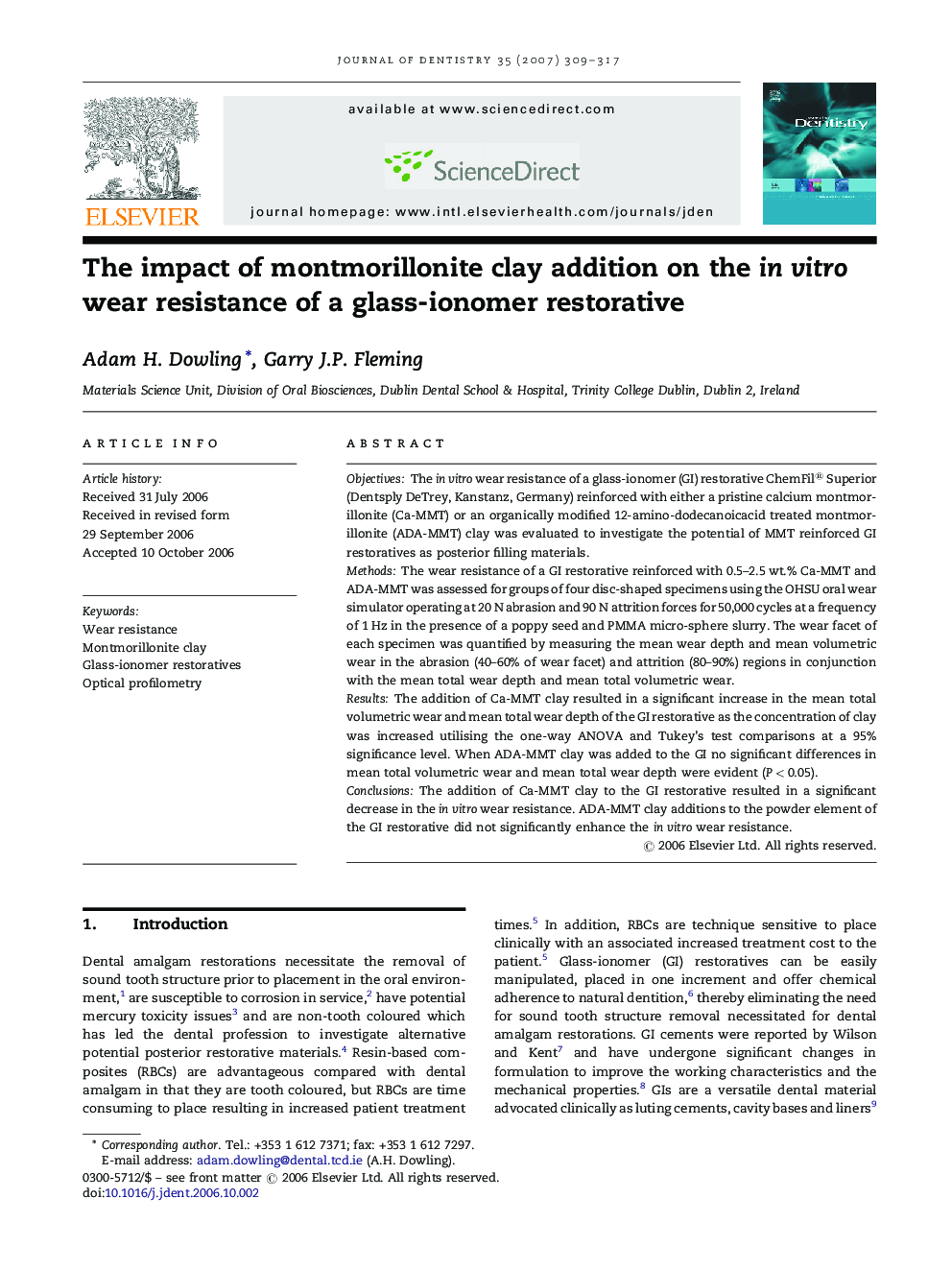| Article ID | Journal | Published Year | Pages | File Type |
|---|---|---|---|---|
| 3146444 | Journal of Dentistry | 2007 | 9 Pages |
ObjectivesThe in vitro wear resistance of a glass-ionomer (GI) restorative ChemFil® Superior (Dentsply DeTrey, Kanstanz, Germany) reinforced with either a pristine calcium montmorillonite (Ca-MMT) or an organically modified 12-amino-dodecanoicacid treated montmorillonite (ADA-MMT) clay was evaluated to investigate the potential of MMT reinforced GI restoratives as posterior filling materials.MethodsThe wear resistance of a GI restorative reinforced with 0.5–2.5 wt.% Ca-MMT and ADA-MMT was assessed for groups of four disc-shaped specimens using the OHSU oral wear simulator operating at 20 N abrasion and 90 N attrition forces for 50,000 cycles at a frequency of 1 Hz in the presence of a poppy seed and PMMA micro-sphere slurry. The wear facet of each specimen was quantified by measuring the mean wear depth and mean volumetric wear in the abrasion (40–60% of wear facet) and attrition (80–90%) regions in conjunction with the mean total wear depth and mean total volumetric wear.ResultsThe addition of Ca-MMT clay resulted in a significant increase in the mean total volumetric wear and mean total wear depth of the GI restorative as the concentration of clay was increased utilising the one-way ANOVA and Tukey's test comparisons at a 95% significance level. When ADA-MMT clay was added to the GI no significant differences in mean total volumetric wear and mean total wear depth were evident (P < 0.05).ConclusionsThe addition of Ca-MMT clay to the GI restorative resulted in a significant decrease in the in vitro wear resistance. ADA-MMT clay additions to the powder element of the GI restorative did not significantly enhance the in vitro wear resistance.
